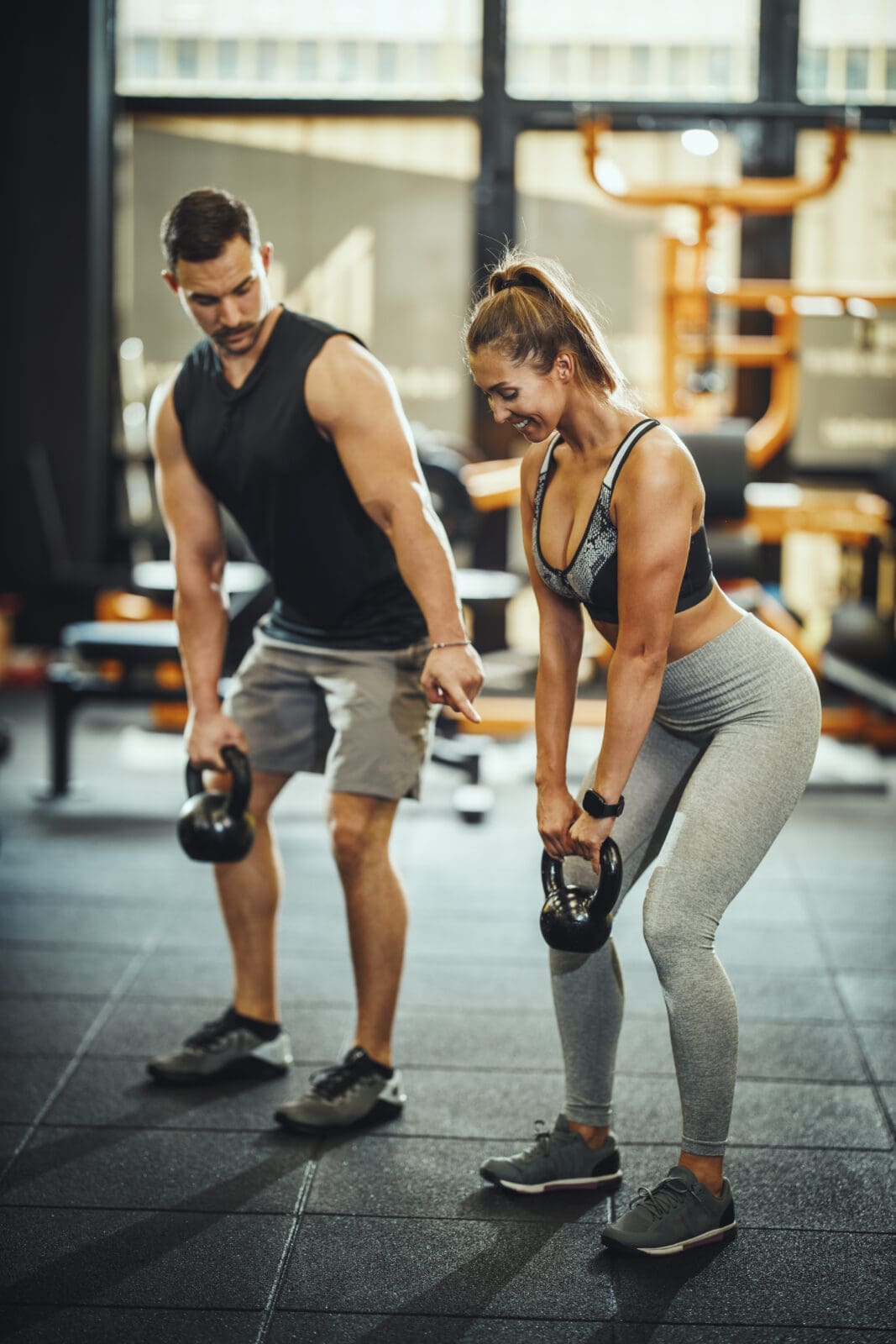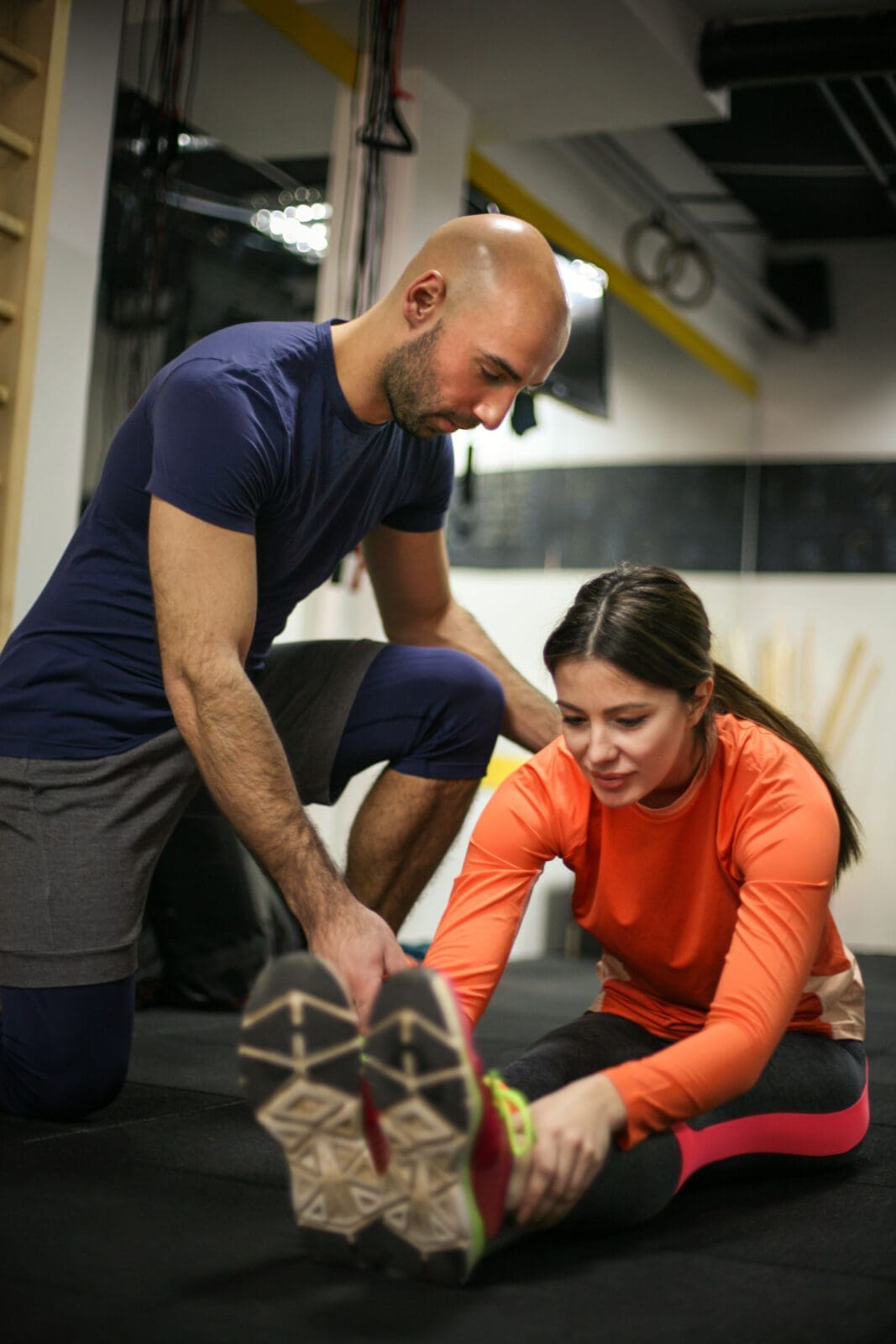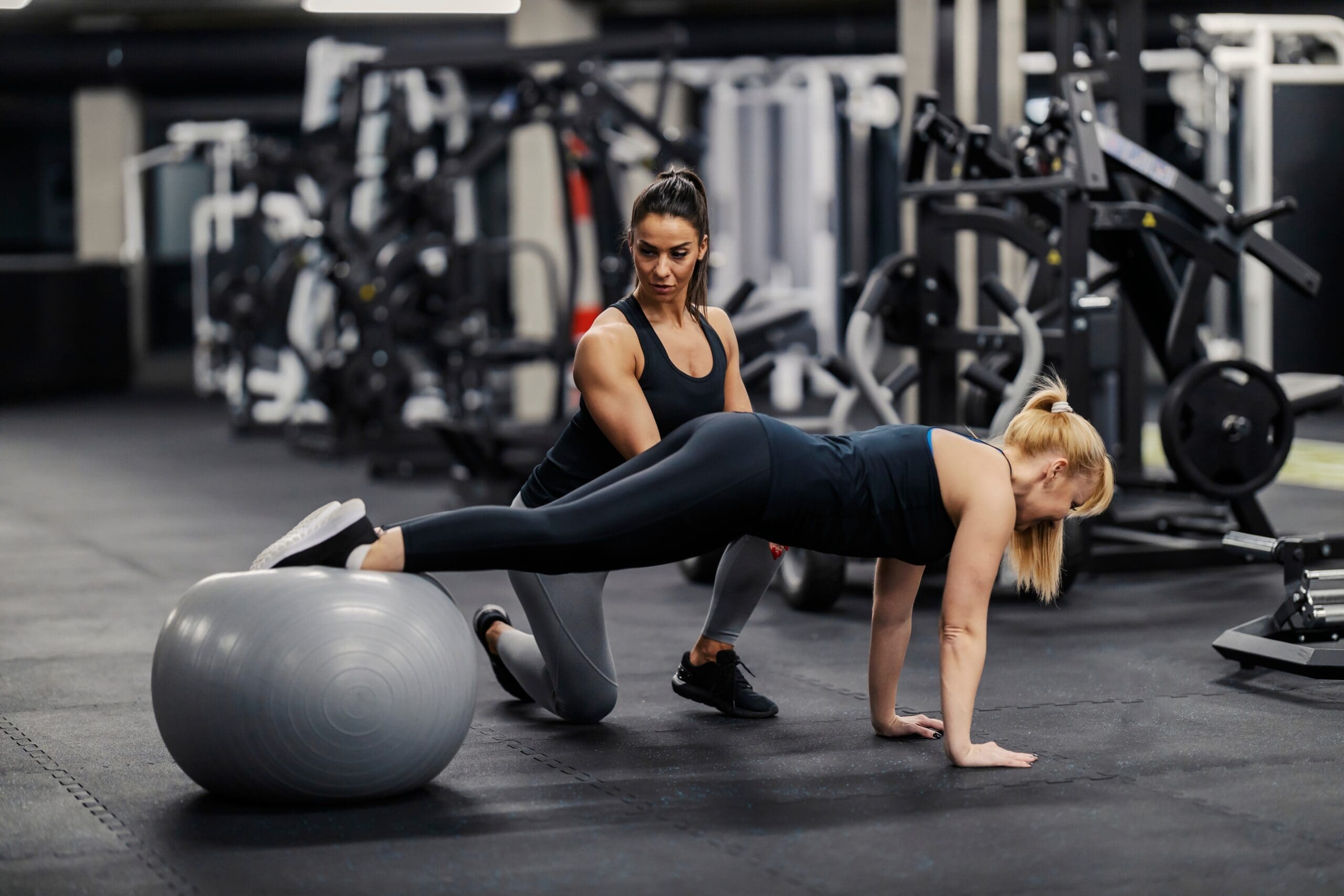Personal Trainer CV Guide
Everything you need to know about getting the perfect Personal Trainer CV
A personal trainer is a fitness professional who works with individuals to help them achieve their health, fitness or performance goals. As they provide tailored workout plans, nutritional advice and motivation to guide clients on their fitness journeys and have many other responsibilities, they will require specific qualifications, skills, experience, and a passion for health and fitness.
When employers or clients look at recruiting new personal trainers, they want assurance that individuals have the necessary credentials and qualities to fulfil the role’s duties. They may also look for candidates with specific specialisations or success stories. One of the ways they can determine whether someone is suitable for the job is by reviewing their CV.
Whether you want to apply for a new personal trainer role within an organisation or attract new clients to your business, crafting an exceptional CV that stands out from your competitors and showcases your professionalism is vital. Your CV is your first opportunity to introduce yourself and make a positive impression and is essentially your personal marketing tool.
Exactly how you write your CV will depend on your background and preferences. However, it should contain relevant and tailored information about your education, work experience, skills, achievements and any other pertinent details that can catch recruiters’ or clients’ eyes. You want to tell readers why you are the ideal person for the job and what you can bring to the role.
In this article, we will provide guidance on how to write a personal trainer CV, what to include, some tips and an example to help you get started. It will hopefully increase your chances of securing an interview and, ultimately, the job.
In this Personal Trainer CV guide
What to include in a Personal Trainer CV
Before deciding on what to include in your personal trainer CV, it is crucial to read the job description or client needs and tailor the document accordingly. If you are applying for multiple jobs, customise each CV to demonstrate attention to detail and passion for the role.
Consider your CV as an introduction to a book rather than a whole novel when deciding on the content to include. It should be a clear and concise overview of why you are the best fit for the position and not your entire life history. Focusing on the most relevant details will make it easier and more appealing.
Although each person’s CV is unique to them and their backgrounds, and in various designs and formats, there are certain elements that all CVs have in common, including contact information, professional summary, education, work experience, skills, achievements and references. Breaking down your CV into these sections provides a useful framework and makes the task more manageable. Let us look at these sections and suggested content in further detail.
Contact information
Your contact information should be at the top of your CV and include your full name, phone number and email address at the very least. You can also include your location, professional job title, LinkedIn profile, professional website or portfolio, where relevant.
Here are some things to consider when adding your contact information to your CV:
- Ensure it is accurate and up-to-date so employers and clients can easily contact you.
- Avoid including your full home address – town, city, or county are sufficient.
- Always use a professional email address rather than one with nicknames.
- Leave out personal details, such as age, date of birth, gender, religion, national insurance number and marital status.
- Only include a photo and personal social media page if requested.
- If your phone has voicemail, ensure it sounds professional.
Professional summary
A professional summary has many other names, such as a personal statement, executive summary and professional profile. It typically goes underneath your contact information at the top of your CV, and it is a concise and impactful paragraph highlighting your qualifications, key skills, experience, specialisations, passions and career goals.
It aims to quickly grab the attention of employers or clients by showcasing what makes you stand out as a candidate and personal trainer. It should give a snapshot of your value and expertise and is your chance to make a strong first impression.
Here are some examples of what you can include in your professional summary:
- Start with your current role or key identity and certifications – begin by identifying yourself professionally and use positive, action-oriented words, such as “Certified”, “Enthusiastic”, “Dedicated” or “Results-oriented”. For example: “Certified Level 3 Personal Trainer” or “Results-oriented Fitness Professional”.
- Highlight your expertise or experience – summarise your years of experience in the fitness industry and the type of clients you have worked with (e.g. beginners, athletes or rehabilitation cases).
- Showcase your key skills or specialisations – emphasise your unique skills or areas of focus. For example: “Specialised in weight loss, strength training and injury rehabilitation”.
- Mention core achievements – share standout accomplishments, like helping clients achieve specific goals or running successful fitness programs. For example: “Proven track record in transforming clients’ health and performance”.
- Emphasise your passion or goals – demonstrate your enthusiasm for fitness and dedication to helping clients improve their health and reach their potential. Briefly mention what you are passionate about. Do you love helping people reach weight loss goals? Build strength? Improve overall fitness? For example, “Passionate about helping clients achieve their fitness and wellness goals”.
Ensure you tailor your professional summary by adjusting your wording to align with the job you are applying for or the clients you aim to attract. Also, aim for 3-5 sentences to make a strong impression quickly.
Here is an example of a professional summary for a personal trainer:
“Certified Level 3 Personal Trainer with 5+ years of experience in creating customised fitness programs. Specialised in weight loss, injury rehabilitation and group training, with a proven record of helping clients achieve measurable results. Dedicated to empowering individuals to lead healthier, happier lives through motivation and expert guidance.”
Education
The next section of your CV can be your education or work experience. If you have more qualifications than experience in personal training, you may want to add this section first.
Your education section is where you provide a snapshot of your learning journey and detail the places you have studied or trained and the qualifications and certifications you have earned. It is important as it demonstrates your background knowledge, skills and expertise and allows prospective employers or clients to see that you can meet their needs. It also adds to your credibility and shows you are serious about your profession.
Here are some pointers to help you create a clear and easy-to-read education section:
- Start with your most recent qualification or training first – list your education in reverse chronological order (the most recent first).
- For each qualification, include the following:
- Qualification/course name, e.g. “Level 3 Diploma in Personal Training”.
- Institution name and location, e.g. “National Fitness Academy, London”.
- Dates attended – the month and year you started and finished (or expect to finish).
- Any relevant coursework, certifications or specialised training, e.g. sports science, exercise physiology, first aid or nutrition (optional).
Focus on education that is relevant to fitness and personal training, and avoid including unrelated qualifications unless they add value.
Tailor your education section to align with the job or client you are pursuing. It is all about showing you have the necessary knowledge to help people achieve their fitness goals.
Work experience/employment history
The following section is your work experience (aka employment history), which you can add after your professional summary or education. Here, you will highlight your previous roles, accomplishments and relevant practical experiences, i.e. what you have done in the past.
Providing details of your most relevant work experience and tailoring it to each role is crucial, as it showcases your practical skills applied in real-world settings and measurable successes and builds credibility that you can help people achieve their goals. It also helps set you apart from other personal trainers.
When writing your work experience, you should add your roles in reverse chronological order (start with your most recent or current position) and not just list your duties – describe your responsibilities. Here are some pointers on what to include in this section:
- Heading: Include a heading, “Work Experience” or “Employment History”.
- Job title: Clearly state your job title for each of your previous roles, e.g. “Personal Trainer”.
- Employer, client or organisation name: Include who you worked for or with.
- Location: Add where you worked, i.e. town, city or county.
- Dates of employment: Mention the month and year you started and ended each role. If you are still currently employed, add “present” instead.
- Key duties
- Highlight your key responsibilities in bullet point form.
- Start each bullet point with a strong action verb, like “assisted”, “organised”, “led”, “motivated”, or “provided”.
- Focus on the most relevant duties, e.g. creating personalised workout plans, leading group classes or providing nutrition advice.
- Keep it brief and aim for three to five bullet points.
- Add your notable achievements and skills here or include them in a separate section. This is where you use specific metrics, such as how many clients you trained, weight-loss results or customer satisfaction improvements.
Here is an example of how you can add your work experience:
Work experience
- Personal Trainer – FitWell Gym, Birmingham (Jan 2022 – Dec 2024).
- Designed personalised training programs for over 50 clients, resulting in a average weight loss of 5kg per client.
- Conducted daily group fitness classes, increasing attendance by 25%.
- Provided nutritional advice, boosting client satisfaction scores by 15%.
- Freelance Personal Trainer – Self-Employed, Birmingham (Jun 2020 – Dec 2021)
- Managed a client base of 20+ individuals, achieving a 90% retention rate.
- Specialised in strength training and injury recovery, with 10 clients regaining full mobility.
You can also add any relevant volunteer experience to this section, e.g. volunteered at a gym, helped coach a sports team or assisted with fitness classes.
Key skills and achievements
Your CV should also contain key skills, i.e. the abilities and expertise you develop through learning, practice and experience. Including your most relevant skills demonstrates your suitability for the role and helps prospective employers or clients quickly see your strengths and unique selling points.
You can include your key skills in your work experience section, achievements or an entirely separate section. Wherever you decide to put them in the document, it is vital to include both hard skills and soft skills to grab the attention of employers or clients.
- Hard skills – are technical, job-specific skills often measurable and learned through training, education, or practice. They tend to be more tangible and easier to quantify. Some hard skills for a personal trainer include health and fitness knowledge, fitness program design, strength training techniques, nutrition planning, CPR certification, proficiency in fitness tracking software, health and safety awareness, etc.
- Soft skills – are personal traits and interpersonal abilities that influence how you interact with others and handle situations. They are more about behaviour and character, often less tangible but equally important. Some soft skills for a personal trainer include communication, empathy, adaptability, motivation, organisation, resilience, customer service and time management.
Ensure you choose skills that match the job requirements and use bullet points to make it concise and easy to skim.
Some organisations use applicant tracking systems (ATS) that scan and pick out specific words and phrases. Tailoring your CV and using similar wording and language may help you pass through ATS filters and get one step closer to an interview.
You can also add your achievements alongside your key skills, demonstrating your skills in action and tangible impact. We will look at how to focus on your achievements later.
Here is an example of how to structure your skills:
- Fitness expertise – strength and conditioning, HIIT, weight loss coaching and injury prevention techniques.
- Technical proficiency – experienced with fitness tracking software and wearable devices (e.g. MyFitnessPal, Fitbit).
- Client engagement – excellent communication, empathy and motivational coaching to inspire client success.
- Organisational skills – time management, goal setting, and ability to tailor programs to individual client needs.
Other information
We have covered the main sections to include in your personal trainer CV. However, you can include additional sections and information if it adds value and makes your CV stand out to potential employers or clients. Here are some examples of other ones to consider:
- Certifications and training – include these in your education or in a separate section to spotlight relevant certifications, e.g. Level 3 Personal Training, First Aid, CPR, NASM, ACE, ISSA, etc. You can also add specialist certifications, such as strength and conditioning, kettlebell training, yoga, pilates, etc.
- Professional memberships – detail if you are a member of any professional bodies or associations, e.g. CIMSPA and the Register of Exercise Professionals.
- Professional development – list online courses, workshops, webinars, conferences or seminars you have attended to stay current in the fitness industry.
- Languages – if you are multilingual, mention it, as this can be a great asset for connecting with diverse clients.
- Volunteer work – include any volunteer experience, such as charity fitness events, sports coaching, gym support and community initiatives.
- Hobbies and interests – share relevant hobbies like participating in marathons, yoga or team sports where relevant. It adds personality and shows your commitment to fitness beyond work.
- Testimonials – if relevant, include one or two brief client testimonials, for example, “I would not have lost 15kg without [your name]’s personalised training program and motivational support”.
If you add other sections to your CV, be mindful of adding too many, as it can make the document look cluttered. Only include information relevant to the personal training job you are applying for or clients you want to attract.
References
The last section of a CV is typically the reference section. Here, you should provide details about individuals (referees) who can vouch for your skills, experience and character. For a personal trainer, references are crucial to build trust and credibility, especially when applying for jobs or attracting new clients.
When deciding on the referees to add, choose people who know you well and can speak positively about your skills and character. It could be employers, colleagues, satisfied clients, mentors, coaches and even teachers and professors if you are newly qualified. Once you have chosen your referees, ask for their permission before listing them. You should also tell them what job you are applying for so they can tailor their comments.
So, how do you write a reference section? First, look at the job posting or client inquiry to see if they require references. If not, you can add “References available upon request” under the section heading. It also saves space on your CV, protects your referee’s contact information and allows you to choose which references to provide depending on the job or client.
If you do add reference details on your CV, include the following information:
- Full name of referees.
- Job title and/or relationship to you.
- Organisation.
- Contact details (phone number and email address).
Here is an example:
- John Smith. Gym Manager. FitWell Gym. Email: john.smith@fitwell.com. Phone: 01234 567890.
Keep your referee’s information up-to-date and professional.
Tips for writing a Personal Trainer CV
You can have all the necessary qualifications, skills and experience, but if your CV is cluttered, disorganised and difficult for employers and clients to read, they may overlook it. While we have covered the main sections to include and some examples of content to consider, here are also some general tips to help you craft a CV that shines and increases
your chances of success:
- Tailor your CV – tailoring your CV to each job, employer, or client is vitally important. Carefully read the job posting or client requirements and focus on the most relevant information that aligns with the job you are applying for to demonstrate enthusiasm for the role. Use keywords from the job posting to ensure your CV passes applicant tracking systems (ATS) filters.
- Keep it clear and concise – keep your CV between 1-2 pages and organise it so it is clear and easy for employers and clients to navigate and read.
- Do not lie or exaggerate – only include the experience, qualifications and skills you possess and do not be tempted to be dishonest or mislead. It can damage your reputation if an employer or client finds out.
- Use action-orientated language – begin each bullet point with strong action verbs like “developed”, “managed”, “motivated”, “collaborated”, or “achieved” to make your strengths and accomplishments stand out. Avoid overused clichés, such as “hardworking” or “team player”, as they lack specificity.
- Use professional and consistent formatting – you can help your CV stand out by:
- Using a clean, professional layout with clear sections, headings and bullet points. Avoid long paragraphs.
- Using professional, simple and clear language, avoiding slang or overly casual expressions.
- Using the same tense throughout your CV. Typically, past tense is used for previous jobs, and present tense is used for your current role.
- Avoiding excessive use of fancy designs, colours and fonts.
- Sticking to a simple font like Arial, Calibri or Times New Roman and consistent size, e.g. 10-12 points.
- Ensuring your CV has adequate spacing to make it more visually appealing.
- Avoid using photos, as they can distract and lead to bias.
- Using a digital format where possible. Save and send your CV as a PDF to ensure the formatting stays intact when viewed on different devices.
- Proofread thoroughly – proofread your CV carefully for spelling or grammar errors, and use an online checker where possible. Consider having a family member, colleague, or friend review your CV to catch any mistakes.

Focus on achievements
Achievements are specific, quantifiable successes or milestones that demonstrate your impact in your past roles. They differ from day-to-day responsibilities because they focus on measurable results, such as improvements in performance or client satisfaction, rather than just listing duties.
Focussing on your achievements is essential, as it provides evidence that your personal training has delivered tangible benefits, such as helping clients reach their fitness goals, and builds credibility. It can give employers and clients confidence in your abilities as a personal trainer and differentiate you from other candidates with similar credentials.
You can add your achievements to various sections of your CV, and where you place them will depend on your background and preference. You can add them to your work experience when detailing your responsibilities, add them to your skills or have a dedicated section. Whichever you choose, ensure they are relevant and tailored to the personal trainer position.
Here are some ways you can focus on your achievements on your CV:
- Reflect on your background and career and identify the most significant and relevant achievements. Highlight the impact and value you brought to organisations or clients. You can share specific success stories about clients you have helped, e.g. “Trained a first-time marathon runner to complete their race under 4 hours”.
- Place the most impressive and relevant achievements at the top of each section to ensure employers see them first and make a strong initial impression.
- Think results and not just duties. Instead of saying, “Helped with fitness classes”, think about what happened because you helped. For example: “Assisted in fitness classes, contributing to a 20% increase in participant engagement”.
- Whenever possible, quantify your accomplishments using numbers, percentages and other metrics. For example:
- “Helped 25+ clients lose an average of 10kg within six months”.
- “Improved group class attendance by 30% through engaging fitness programs”.
- “Retained 90% of clients for over a year, exceeding gym targets”.
- “Completed advanced nutrition courses that led to the creation of a new client dietary program, resulting in a 15% improvement in client results”.
- Start each achievement with a strong action verb to convey your role and contributions clearly. Examples include “Implemented,” “Developed”, “Enhanced”, “Led”, “Coordinated” and “Achieved”.
- Include testimonials or client feedback, if applicable. For example, “Received positive testimonials from clients who noted improved physical performance and renewed motivation”.
By focusing on achievements this way, you demonstrate your expertise as a personal trainer and highlight your commitment to delivering real, measurable results. It will help leave a strong impression on prospective employers and clients in the competitive fitness industry.
Describe your experience
Experience on a CV refers to your professional history, including jobs, internships, volunteer work or other roles that demonstrate your skills and abilities. It provides prospective employers and clients with insight into your background, practical skills and the impact you have made in past roles, helping them assess your suitability as a personal trainer.
We have looked at two main sections where you will cover your experience, professional summary and work experience, and some examples of what to include. To recap:
- Professional summary – here, you will outline your years of experience, key expertise, skills, achievements and impact. You should keep your descriptions in your summary succinct and customised to grab the attention of potential employers and clients.
- Work experience/employment history – here, you will describe your past roles in ore detail, focusing on the most relevant responsibilities. Rather than just listing them, highlight your accomplishments, skills and measurable results, and start each bullet point with a strong action verb.
To effectively describe your experience throughout your CV, focus on showcasing your core responsibilities, skills, and, most importantly, achievements. When applying for a specific job, align your descriptions with the requirements listed in the job posting to show that you are the right fit.
If you are newly qualified and/or have limited direct experience as a personal trainer, describing your experience in this situation can be tricky. Do not worry – you can still craft a compelling CV by focusing on related roles, volunteer work or certifications that showcase your transferable skills. Here are some pointers on how to describe your experience even if you do not have direct personal training experience:
- Highlight transferable skills – look back at your academic, professional and even personal life and identify any hard and soft skills you have developed that can be useful as a personal trainer, e.g. use of fitness tracking software, customer service, teamwork, planning own workouts, coaching, problem-solving, etc.
- Emphasise relevant certifications and education – showcase any relevant training, courses or workshops, even if these are classroom or online experiences, as they highlight your commitment and foundational knowledge.
- Mention relevant experience – even if you have not yet worked as a personal trainer, you may have other experiences demonstrating your ability to help clients achieve their goals, for example:
- Volunteer roles – mention if you have helped run community events, coached local sports teams, or assisted in a gym or community centre.
- Detail internships or shadowing – mention any internships or shadowing opportunities, even if short-term. Describe what you learned, such as client assessments, program design or motivational techniques.
- Non-traditional training experiences – include self-initiated projects or informal coaching (like organising a fitness challenge with friends or running a blog on health and exercise). Frame these experiences to show your capacity to develop and execute training programs.
- Demonstrate your passion – use your professional summary to showcase your enthusiasm for the role, for example: ” Certified aspiring Personal Trainer with Level 3 qualification and CPR certification. Passionate about fitness, skilled in designing tailored workout plans and experienced in motivating individuals through volunteer coaching and personal challenges. Dedicated to helping others achieve healthier lifestyles”.
By describing your experience this way, you build a narrative around your passion for fitness and your readiness to take on a personal trainer role, even if your direct experience is limited.

Tailor your CV to the Personal Trainer position
Tailoring your CV means customising it to align with the specific personal trainer job you are applying for. It shows employers and clients that you are taking the role seriously and can meet their needs and goals.
To tailor your CV, you should highlight your most relevant qualifications, skills, experiences, personal qualities and achievements and match them with the specific requirements and expectations of the role. Here is some guidance on how to achieve this:
- Read the job description – carefully read the job posting and identify what the organisation or client is looking for in a personal trainer. Match your CV to the specific job posting by including phrases and keywords from the advertisement.
- Research the organisation or client – look at the organisation’s website, social media feed and latest news to identify its values, goals, mission statement and ethos and add the same language to your CV. If a client has posted a job or query, ask them what their needs and goals are so you can include relevant credentials.
- Consider the employer’s or client’s style – align your tone and presentation with their brand. A high-end gym might call for a professional, polished tone, while a boutique fitness studio might appreciate a friendly and approachable CV.
- Use a targeted professional summary – align your summary with the job description and emphasise your relevant experience and skills. Mention the job title and the organisation, client or employer name to show you have tailored your CV for this specific role.
- Emphasise relevant education and certifications – list any certifications, training or courses related to personal training and any specialisms they are asking for. Highlight the qualifications mentioned in the job posting.
- Tailor the bullet points in your work experience section – focus on your most relevant job roles and responsibilities. Use bullet points to showcase your key achievements and align with the job requirements. For example, if the job posting mentions helping clients lose weight or gain strength, highlight your expertise in these areas.
- Highlight the most relevant skills and achievements – use fitness industry keywords, such as “workout programming”, “client assessments”, ” client retention”, “group training”, etc. Mention any measurable outcomes (e.g. client progress metrics) from previous roles or personal projects.
- Do not forget to tailor your cover letter – if the job advert asks you to send a cover letter with your CV, do not forget to tailor it to the personal trainer position. Address it to the correct person and reference the company, client and role. Highlight relevant skills, achievements and experiences that match the job description. Use examples from your CV to support your claims and detail what makes you the best fit.
When you tailor your CV to each personal trainer job, you will demonstrate that you are qualified, experienced and aligned with what the employer or client is specifically looking for. It can increase your chances of getting an interview and a job.
Good luck!



